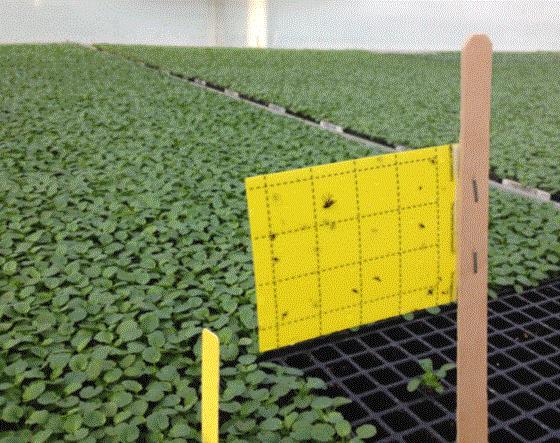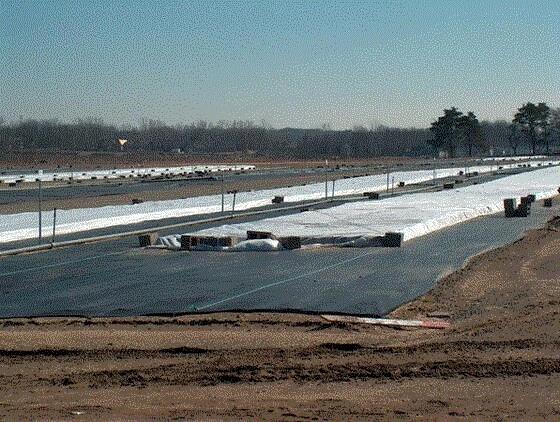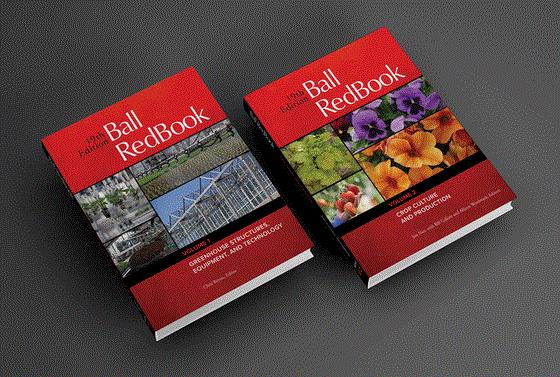Giving Back: KidsGardening.org
I want to kick off this week’s newsletter with something that’s really important to me—getting kids involved in gardening. Yes, I like working in the yard and garden with my own kids, but they’re teenagers now and my opportunities are few and far between. But I can assure you they’ve both spent plenty of time with dirty hands building garden beds, picking vegetables and pulling weeds. The importance of digging in the dirt and understanding how plants grow and where food comes from cannot be overstated, and it should start at a young age (in my opinion).
If you’re not familiar with KidsGardening.org, let me introduce you to an amazing organization with a huge reach that’s been connecting kids with nature for more than 40 years. Their vision is: Happier, healthier kids learning in the garden and connecting to nature. KidsGardening.org believes gardening improves kids’ lives, their communities, and the planet. Gardening engages every child’s innate wonder and care for the natural world, offers them opportunities to participate in hands-on learning, and teaches them where their food comes from.
I don’t think any of us will disagree with that statement!
Furthermore, the mission of KidsGardening.org is equally powerful and true: KidsGardening creates opportunities for kids to play, learn and grow through gardening, engaging their natural curiosity and wonder. We want every child to experience the unique transformation that occurs when they spend time caring for a garden, be it outside, in a classroom or in a cup on the kitchen windowsill. Since 1982, KidsGardening has served as a premier support provider for youth garden programs nationwide.

I have served on the board of this organization for a few years and I can vouch for the quality of educational materials, impact of school garden grants and overall passion for and dedication to the stated mission.
With the help of amazing partners, KidsGardening.org reaches more than 2.5 million kids each year with curriculum, lesson plans, grants and activities, and since 2016 has distributed more than 1,000 grants and installed gardens across the country. The impact is HUGE, and just about all educators and caregivers, KidsGardening.org works with see an increase in youth environmental stewardship and social-emotional skills.
I could honestly go on and on about how wonderful this organization is, but my main reason for including this in the newsletter is to encourage you to donate. This past Tuesday is has become known as “Giving Tuesday,” coming as it does just after Black Friday and Cyber Monday. Giving back is important, so in the spirit of the season, consider supporting a great cause that benefits our industry—it’s a win-win!
Learn more about KIDSGARDENING.ORG by clicking the link, and consider partnering with a one-time or recurring DONATION. Your support is critical and very much appreciated!

Grow Pansies & Violas Like a PRO—New Video!
We’ve been releasing a lot of videos lately … especially covering specific crops and taking them from germination to finish. This week’s installment come from our friends at Syngenta Flowers who’ve been busy launching exciting new varieties. In fact, they have a huge launch slated for 2025 that’s a comprehensive upgrade to a series you probably know and love: Penny Viola. I had a chance to talk to Dr. Brian Krug, a technical lead at Syngenta Flowers, about this launch, as well as another major series we first saw at California Spring Trials in 2024. They sort of go hand in hand.

The Delta Pro pansy series was released a couple years ago as a comprehensive upgrade to Delta, an industry leader for more than 30 years and Penny Pro violas will be new for 2025. When such iconic series are completely retooled, it shows that the breeders have been hard at work identifying improvements that can be brought to growers and gardeners.
In GROW PANSIES & VIOLAS LIKE A PRO, Dr. Krug explains exactly why both Delta Pro and Penny Pro offer major benefits for growers, including Delta’s super-short timing window (all colors flower within 10 days of each other), reduced need for PGRs and huge 3-in. blooms; and Penny’s flower power, non-stretching habit and vigorous root system.
After taking you through the key features, Brian next dives deep into best practices when propagating and finishing both Delta Pro and Penny Pro. Although your production of these new series will look a lot like typical pansy and viola plans, there are a few nuances to note. Breeding for compact habit in production dictates lower PGR needs, and the tight bloom window for Delta Pro means you don’t have to stagger these pansies to ship the full color range in flower. To illustrate this, check out a TIME-LAPSE VIDEO of a comparison trial. Brian also shares some tips and tricks learned throughout the years working with pansy and viola growers that will no doubt benefit your team.
NOTE: Delta Pro was bred for Spring OR Fall production, which is fantastic, and Brian touches on this in his presentation, as well as some regionally-specific advice to help growers across all of North America.
As we’ve done with so many other videos, these conversations are also available as podcasts for those of you who like to listen to them on the go. Be sure to subscribe to the Tech On Demand podcast on your favorite app so you never miss an episode. And this winter, why not jump back into the archives and get caught up—there are 150 episodes as of today.

Nick’s Tip of the Week: Preventative Pest & Disease Management
Each week, I’ll work with my buddy Nick Flax, a technical services expert at Ball, to share a concern that’s come up during one of his numerous calls with growers across North America. This week, he’s digging into ways to establish pest and disease thresholds on the path to prevention and management.
PROBLEM: I often hear from growers interested in developing specific protocols for preventative pest and disease management. As a point of clarification, prevention is not the same as exclusion. Exclusion focuses on keeping pests and diseases from entering in the first place, whereas prevention relies on setting thresholds, regimented detection efforts and quick reaction once a malicious organism is identified in the greenhouse.

NICK’S TIP: One way to approach this important production task is to start with thresholds. We use the term “clean culture” frequently when discussing greenhouse IPM, but it’s virtually impossible to have 100% pest- and disease-free crops. It’s important to understand this or you will likely spend way more on manhours and pesticides than necessary to keep crops in good health. Thresholds should be proportional to the cost of managing the pest or disease in question—the economic injury level. Set tolerances for pests and diseases based on risk and severity and develop appropriate action plans for each threshold to avoid over- or undermanagement.
I’ll use powdery mildew management as an example for how to set and act upon thresholds.
Under low-pressure scenarios, powdery mildew can cause minor damage to foliage and flowers, but plants often recover quickly if greenhouse parameters are changed to make a less-favorable environment for disease. An appropriate level 1 threshold for scattered, early signs of disease could include an increase in air flow or venting, modified watering practices to reduce relative humidity, or increased spacing between plants.
Moderate infestations can cause discoloration or noticeable damage to infected tissues, but plants can often recover if cultural and environmental factors are modified, and a fungicide is applied to reduce spread to healthy plants. If unmanaged, crops may need to be grown out for longer, which would increase the cost of production and reduce profit margin. An appropriate level 2 threshold could include a continuation of level 1 efforts and use of a “soft” fungicide like a potassium bicarbonate product to curb the spread.
Heavily infested plants may incur unrecoverable damage, and crops may become stunted or susceptible to other pathogens in the greenhouse. If management efforts are not stepped up, significant crop losses can occur, crop time may increase to an unsustainable level, and labor hours and other inputs needed to turn the crop around may become cost-prohibitive. In addition to level 2 and 1 measures, level 3 management could include removal of heavily infested plants to quickly reduce sources of fungal spores in the greenhouse and use of a harder-hitting fungicide chemistry to remediate disease.
Thresholds cannot be applied universally to all crops and pests or diseases. The greater the risk of crop loss or cross-contamination into adjacent production areas, the lower the management thresholds need to be. Also, ensure that management steps at each level are appropriate based on the life cycle and basic biology of the pest or disease in question.
If you are unsure of how to develop thresholds or appropriate management strategies for unfamiliar pests and diseases, reach out to a local extension agent or technical specialist (like me) for help.
Robust Monitoring
Thresholds are critical components of IPM, but they’re nothing without a robust monitoring strategy. If you don’t detect a pest or disease at or before your level 1 threshold, how are you supposed to prevent it from getting a foothold and causing more damage—right? It’s easy to say that you should, “monitor crops regularly,” but execution is not always that simple. Here are a few things to consider to make scouting more effective and actionable:
Commit. Crops should be scouted daily around the same time, ideally sometime in the late morning once the sun has fully risen. Most pests are actively feeding or moving around and easier to spot once the sun is fully up but can become less active as the day continues, especially if temperatures are above optimal. Also, it is easiest to see disease signs and symptoms when light is ample but diffused throughout the greenhouse. If you’re an owner/grower/operator and your time to walk crops is limited, scout every other day at the bare minimum.
Give ownership. Put someone (or a team) in charge of pest and disease scouting and make them accountable for keeping the team apprised of changes in the greenhouse. This helps ensure that everyone involved with growing crops is on the same page regarding new and ongoing risks to crop quality and that appropriate actions are being taken based on thresholds.
Record. Don’t just go out into the greenhouse and look for pests and diseases. Write down what you find and maintain continuous records. Whether you keep a written log or maintain a spreadsheet on your computer, record bug counts of key pests from sticky cards and disease symptoms and signs while scouting. Be sure to collect specifics like the crop species, cultivar, greenhouse/bench location, distribution in the growing area, and a detailed description of the pest/symptoms. Take high-quality photos, as well, and appropriately label and catalog them to assist with identification in case you need to consult a specialist.
Evaluate. As the saying goes, “what gets measured gets improved,” and this holds especially true for IPM. For example, going back to the powdery mildew example above, if you spray a fungicide after hitting your level 2 threshold, how effective was the application? If about 50% of the crop was showing symptoms before spraying, what proportion of the crop is showing symptoms later that week? Quantify the change in pest population or disease severity to determine whether control measures have truly been effective or if the next level of management needs to be taken.

Profile: George Sant & Sons Greenhouse
If you haven’t yet opened up your copy of GrowerTalks’ December issue, you absolutely MUST read the cover story. It’s a profile of third-generation growers George Sant & Sons Greenhouse in Ontario, Canada. I’m sure many of you will relate to this business and the stories penned by editor Jennifer Zurko, who visited the operation earlier this year. It’s not only a tale of evolving with market shift and trends, but also maintaining a dedication to quality plants and healthy relationships. And reflecting the importance of paving a solid road to the fourth generation, many great lessons are shared.

Here's an excerpt to get your attention … but please take some time over the holidays to read PRESERVING THE PAST & FOCUSING ON THE FUTURE.
If you didn’t know anything about George Sant & Sons Greenhouses, the first time you walk around their operation you’d probably think they were a newer business, with all of the modern technology and upgraded structures. But, in reality, it’s a 78-year-old company that has a long history in its suburban Toronto community.
Currently, the business is run by brothers Dan, Rick and Ron—the third generation of Sants. But also playing a major part are their sons—Mark, Eric and Miguel—who are continuing the legacy that George (or “Nannu,” as they called him) instilled in their fathers that’s being passed down. This includes taking risks, making the hard decisions and knowing when it’s time to pivot.
It’s this ambition of embracing change while staying true to their history that’s made the Sants successful. I wanted to know how they’ve been able to manage that balancing act in a volatile industry like horticulture, so I flew a couple of hours over the border to ask.

Protecting Perennials in Winter
As I write, snow is falling outside my window in lovely Cleveland, Ohio. I actually made up a lame excuse to drive my 16-year old daughter to school this morning so I didn’t have to worry about her first slippery drive. I'm not even joking.
Now I can segue from being an over-protective parent to protecting your over-wintered perennials. I know it’s a stretch ...
For some tips on protective coverings, I turn to fellow e-newsletter editor and longtime perennial grower Paul Pilon. Paul shared info on this topic in a past issue of PERENNIAL PULSE and now’s the time to pass his advice along. Here’s what he had to say:
With the onset of winter, many nurseries and greenhouses that overwinter perennials inside structures or in outdoor beds are faced with the challenge of determining when to apply cold protective blankets. Here are my thoughts on the topic.
I've found it best to cover perennials as late in the fall or early winter as possible. It's very important to allow plants to go dormant and become fully acclimated to cold temperatures before applying blankets or other protective coverings. It's okay and beneficial for plants to experience freezing temperatures prior to covering them for the winter. Keep in mind the main goal of protective coverings: The covers are intended to protect the plants from the coldest periods of the winter. So, avoid covering perennials too early!

I prefer to wait as long as possible and not apply protective blankets until the outside temperatures are expected to stay at or below freezing for the duration of the winter, or at least for an extended period of time. Avoid covering in the fall when the cold events are only expected to last a few days.
Plants being overwintered inside covered structures can have the blankets applied even later, as the houses will provide some protection already.
As beneficial as frost blankets can be, they can also have some detrimental effects unless they're managed properly. Plants that are semi-evergreen to evergreen should only remain covered during the coldest periods during the overwintering period. When the conditions are above freezing, the coverings should be removed to reduce the occurrence of diseases such as Botrytis. Perennials that are considered evergreen (Phlox subulata, Scabiosa, Leucanthemum, etc.) should be covered in such a manner that the coverings do not come into direct contact with the foliage for extended periods of time. You can use hoops or plastic bulb crates to support the coverings.
Lastly, be sure to peek under the blankets at least once a week to detect any problems.

Finish Line … The Perfect Christmas Gift
With only a few short weeks between Thanksgiving and Christmas, the scramble has begun to find gifts for everyone on the list in time to get them wrapped and under the tree. Which means … NOW is the time to ORDER COPIES OF THE BALL REDBOOK for those deserving plant people in your life!

First published in 1932, the Ball RedBook is considered to be the “bible” of the greenhouse industry. It’s loaded with detailed production information for annuals, perennials, cut flowers and other floriculture crops, plus in-depth chapters on greenhouses and growing technology.
Now in its 19th edition, the Ball RedBook is bigger and better than ever—nearly 1,000 pages across two volumes covering every topic the modern greenhouse operator needs to know. This latest edition includes sections on robotics and artificial intelligence, controlled-environment agriculture and cannabis production, to name just a few of the many updates and additions. It's the perfect gift!
Talk to you next week!




Please feel free to send your comments, constructive criticism and topic ideas to me at bcalkins@ballhort.com.

Bill Calkins
Editor - Tech On Demand
This email was received by you and 25,735 other fine subscribers!
If you're interested in advertising in Tech On Demand, contact Kim Brown ASAP and she'll hook you up.